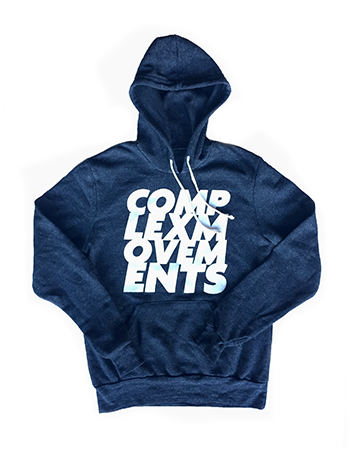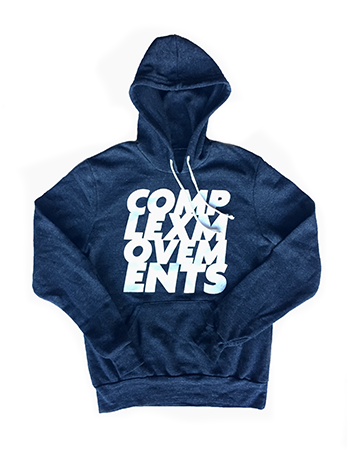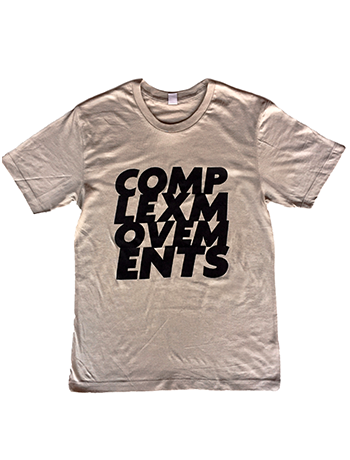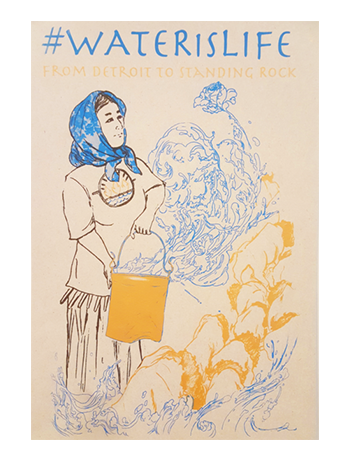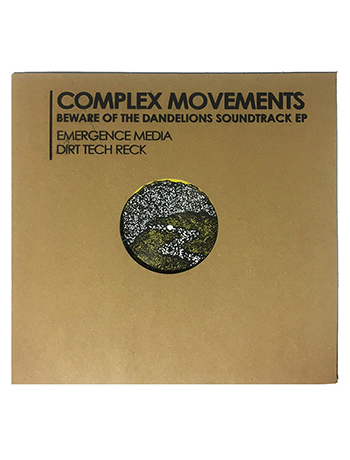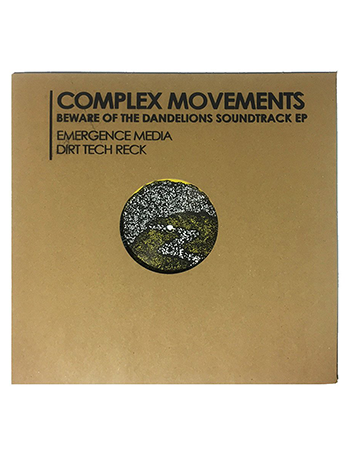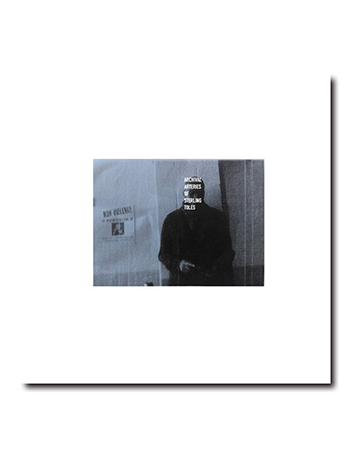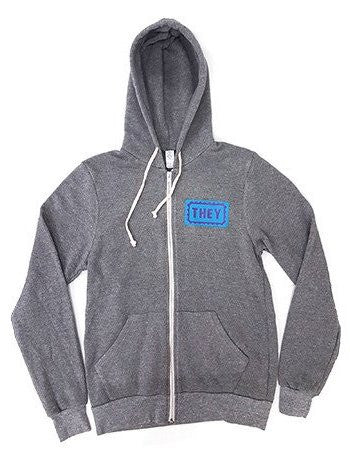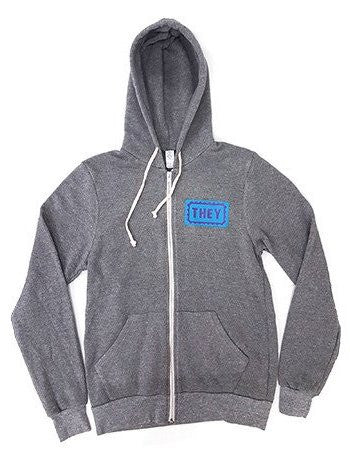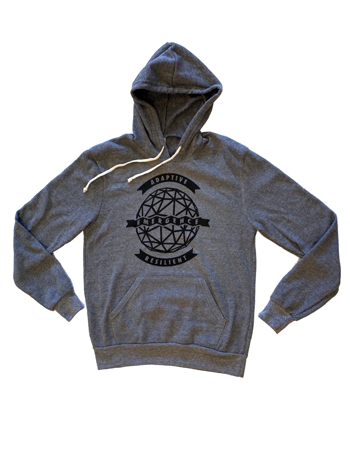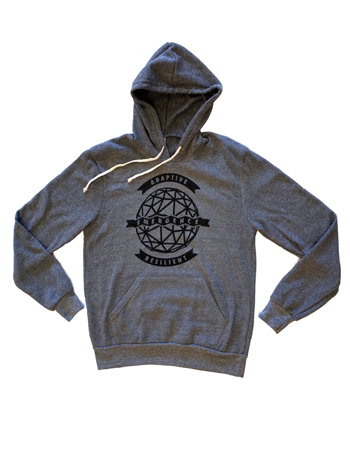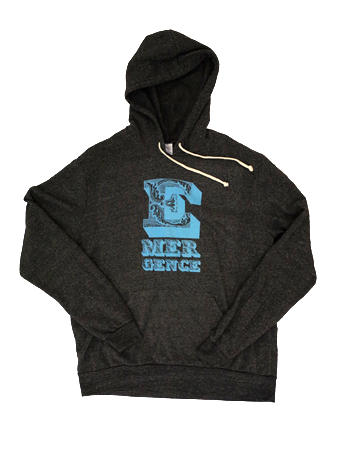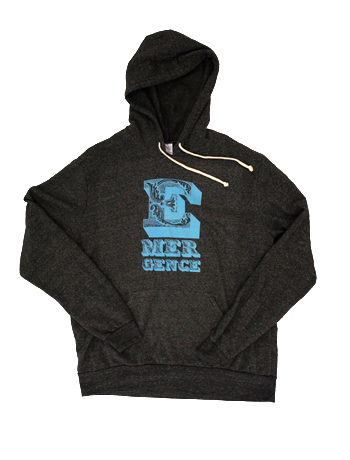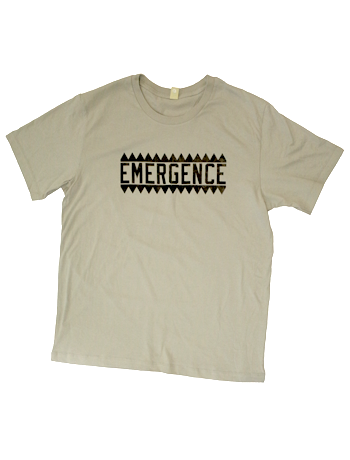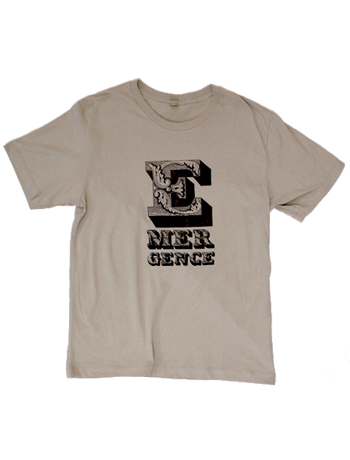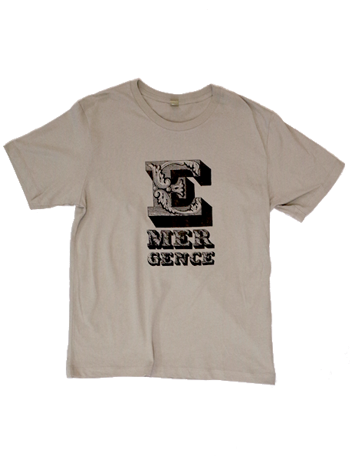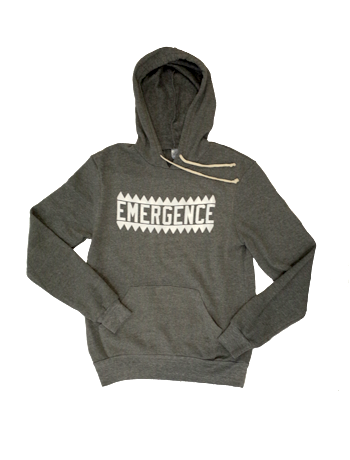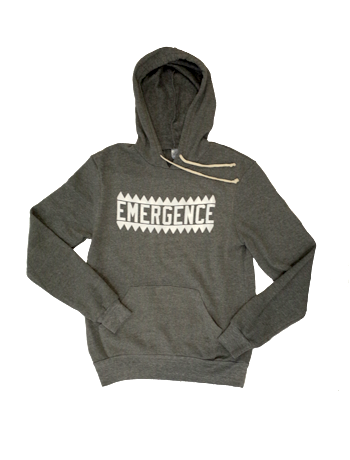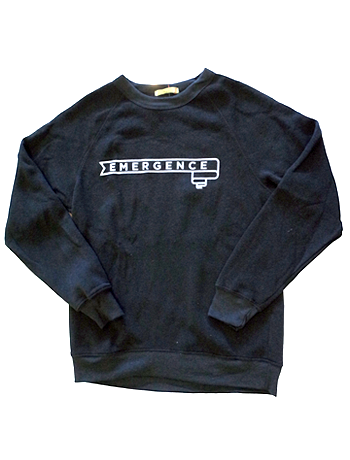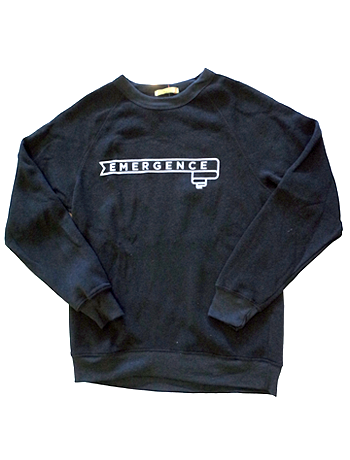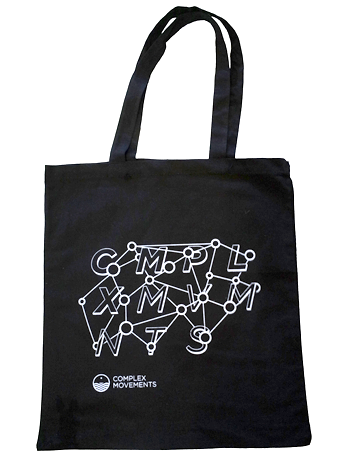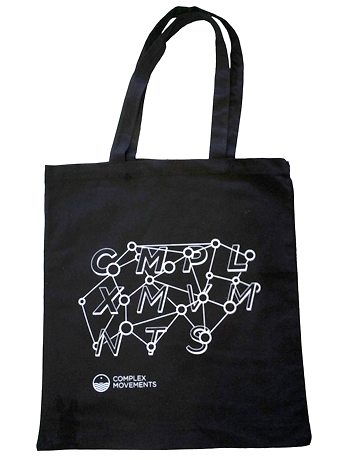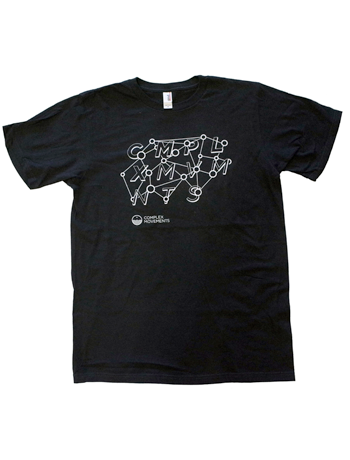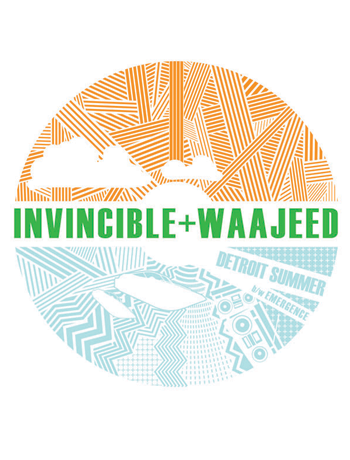They: Interview with Kiley May
ill Weaver and Wes Taylor have developed and are sharing a new line of apparel for Emergence Media called “THEY”. “THEY” is a strategy for signalling one’s self-identification with the gender nonconforming pronouns “they” and “them” in an affirming and aesthetically bold way. As part of the launch of this new apparel, ill discussed the “they/them” pronouns with other inspiring individuals who use “they/them” pronouns. Read on for ill’s summary of their conversation with Kiley May.
Read more about the THEY campaign here.

Kiley May is a Rotinonshón:ni Mohawk storyteller and artist from Six Nations of the Grand River Territory (aka “the rez”) and is now settled in Toronto. Kiley is a two-spirit person, who can also be called trans, queer and genderqueer. Her pronouns are they/their/them and also she/her. They do creative work in writing, theatre, film, photography, fashion and dance. And transitioning, which is an art form; her greatest art work to date.
ill discusses THEY with Kiley
“It's strange and difficult to observe the strained reactions people have when you call gender into question. You uproot their whole idea of gender and it really moves or disturbs something on a deep level because for a lot of people gender is supposed to be this solid thing that never changes.”
Kiley identifies as a queer two-spirit, trans woman and emphasizes that they don't identify as simply a man or a woman. “For me, being a trans woman is very dualistic and fluid. How I feel about my gender can change according to the day or my mood or the phase of the moon. So that's why I felt most comfortable identifying with gender neutral pronouns, and began using both she and them.”
Kiley proudly identifies as Rotinonshón:ni and Mohawk. Their mom is Mohawk, and her dad is Cayuga. They grew up on the reserve called Six Nations of The Grand River Territory, or Six Nations for short. Prior to choosing their preferred gender pronouns - the question of language and identity was something they had to grapple with regularly, navigating between worlds.
“I grew up there on the rez and we called ourselves onkwehon:we or Indian people. It wasn't until I went to high school off the reserve that I got called native, and then in Toronto for university the politically correct term was Aboriginal and Indigenous. That was also when I first was introduced to the term ‘two spirit’ and started incorporating that. It’s an ancient identity, but two spirit is an English term that was created around 1990 so it's a very modern term.”
Recently they visited the reserve they grew up on and met with an LGBTQ youth collective. She talked to them about the term two-spirit and asked how the group felt about that term. “The group all sort of side eyed each other.” This group felt the term didn’t belong to people on the reserve and is a more modern term associated with academic or political native queers living in cities.
Kiley went on to explore the disconnections between language, colonization, and cultural practices across her communities.
“What I would like to propose to the LGBTQ youth collective in my community is that if they don't like the term two-spirit, we can create new words and we can insert that into our own vocabulary and vernacular. We can use the Mohawk language to describe trans people and queer people and two-spirit people, and start meeting people to recover, uncover, or create new ceremonies. We need to reintegrate and reinsert ourselves in order to take back our culture.”
They went on to explain how they grew up learning the Kanie’keha:ka (Mohawk) language, as well as traditional ceremonial practices in longhouse, which she explains is a sacred place for carrying out thanksgiving ceremonies. “The longhouse is gender segregated: there's the men's side and the women's side and there's men's ceremonies and women's ceremonies, which can be triggering for me. But having transitioned and going back and crossing over an actual divide from the men's side to the women's side - that alone is a radical act of decolonizing and indigenizing.”
She has been researching ways to approach this ceremonial process respectfully, and thinking of ways to have challenging conversations about gender and two spirit issues with the longhouse people, the faith keepers, clanmothers and the chiefs who run the ceremonies.
“We have to start with two spirit people being present within ceremony and taking on ceremonial roles, and then moving toward reclaiming and creating specialized roles for two spirit people to do. Oftentimes two spirit people are healers and medicine people, who historically could participate in ceremonies that are traditionally just for men or just for women and go between both worlds. When I first started transitioning and identifying as two-spirit, I was invited into a water ceremony which is usually a women's space to be a water bearer. The welcoming of trans people into ceremonial spaces is a huge first step, then we can reclaim our words and pronouns and start changing the language. Hopefully in my lifetime I will see the reintegration of queer and trans and two spirit people in my culture.”
They discussed the dynamics of using both they and she pronouns interchangeably - and how context and issues of safety impact their choice of pronouns.
“When I first started transitioning I was at school, and very vocally advocating for myself and teaching people about gender-neutral identities. But when my hormones started taking effect more noticeably, people started gendering me as she, as female, and as a woman. There are a lot of times where I found it was much safer and much more convenient to go along with it. Because first of all as a genderqueer androgynous person it can be very volatile and hard. It's like you're a walking target. I remember walking down the street and people would verbally harass me. But there were also other times where I found it safer to identify as she or her. Like last summer I was unemployed and out of desperation took a landscaping job. I was working outside with mostly men. That was a situation where I decided just to go with she. I felt like that wasn't a circumstance and a context where I felt comfortable to really put down and educate people about gender neutral identities and pronouns.”
She also gave insight into the generational perceptions of pronouns and gender identity and different factors that can cause tension across generations within queer communities:
“A few years ago I was in a group for trans people at the Sherbourne Health Centre and whenever I was talking about being genderqueer and using they/them pronouns there were older queers who didn't understand gender-neutral pronouns or were resistant to them. Some explained that they were coming from a generation where trans women fought so hard to be recognized as women, and trans guys fought so hard to be recognized as guys, that they became comfortable with the gender binary and did not want it changed. I was one of these young and up and coming queers from this new generation that are trying to create space and validation for genderfluid identities and adapt the language to include gender neutral pronouns. So it's really interesting to see how over the years it's evolved.”
They also spoke about the backlash since the heightened visibility of gender-neutral identities and pronouns:
“A lot of people think that gender neutral pronouns are something new and modern, but English and other Western languages are the few languages that use gender-pronouns and gendered language. So many cultures around the world and throughout history have languages that don't use gender pronouns or that have many gender pronouns. Being two-spirit, being queer or trans is nothing contemporary, it's ancient. As long as humans have existed trans people and queer people and two spirit people have existed.”
Kiley is deeply connected to her family-- the oldest of 12 children, with 5 nieces and 3 nephews. They said they feel like a role model and do all they can to teach their younger family members that many types of people exist, and what it means to be trans and about different pronouns.
“Familial titles are really difficult because you have aunt and uncle, which are gendered. I guess cousin and sibling are gender-neutral, but nephew/niece are gendered ((ill note: shout out to fam who use the term nibblings to describe their sibling’s children)) so it can be difficult. But kids can come up with creative names to call us. When I was at the Trans Day of Remembrance event at The 519 Community Centre, a trans woman who was learning ASL was explaining that the signed language for transgender translated to ‘beautiful heart’. So I think there are creative ways to describe each other.”
Kiley is passionate about art and creativity. She is working on a children's book. This year summer they will begin studying in an indigenous program focused on theater and performance art. She has made films and studied photography. They say that more than anything they are a writer and storyteller. She applies all this creative thinking to developing workshops and political education that focuses on uplifting the complexity of identities.
“Somewhere along the path of being an educator I started talking about kaleidoscope identities. It was in response to the use of the male/female gender spectrum, which can be very binary. So what I thought of instead is a
kaleidoscope - when you hold it up to the light it shifts and changes - it's very colorful and there are no boundaries that confine it. So instead of saying the gender spectrum, I say the gender kaleidoscope. I see it as a more appropriate way to describe gender and sexuality because they are so fluid and change and evolve throughout our lifetime. It leaves room for people to change, and to evolve.”
ill Note:
Special thanks to Chantelle Gallant for the intentional introduction to Kiley!
Next →
← Previous

